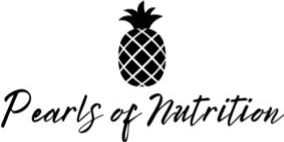
We’re often told to eat our fruits and vegetables but also to avoid sugars. So, if fruits have sugars, should we really be eating more of them?!
This is a great question and one that often comes up in our dietetic offices. A lot of research supports the correlation between excess sugar intake and its negative impact on our health. Added sugars are often the type of sugars in question – specifically high fructose corn syrup and sucrose (aka table sugar). Since fruits contain fructose, it’s a valid question to wonder if they’re actually nutritious.
While the literature does support evidence that a diet high in added sugars can have negative impacts on our health, the amount of sugar found in fruits is not near enough to cause concern. In other words, fruit is not only not harmful, but it is an important staple in a healthy well-balanced diet.
Fruits are a great choice for several reasons – primarily due to their rich nutrient content. Fruits are chock-full of vitamins and minerals, which help our cells and organs function properly and help our immune system stay strong. Many fruits contain vitamins and minerals such as Vitamin C, potassium, and folate – which many people tend to be deficient in. Of course, fruits aren’t limited to these 3 nutrients – since fruits comprise their own food group, the nutrients you’ll find in them vary greatly! Therefore, eating a variety of fruits is beneficial to our health. If you often purchase the same fruits, try incorporating a different one each grocery trip, in addition to your usual staples. This is a fun way to boost your micronutrient variety! You can do this by taking some time to explore the produce or frozen fruit sections. Try to find fruits that you haven’t tried before or maybe haven’t consumed in awhile. Eating fruits that are in season are often less expensive, tastier, and contain their peak nutritional value. Have you ever had a mushy or mealy apple in July? It’s because apples are fall fruits so that one had likely been around for some time before it made it’s way to your plate. You can learn more about what fruits are in season by checking out this chart.
Fruits are also rich in antioxidants, which help fight free radicals in the body. Some free radicals are made naturally by the body and we run into others as a result of environmental exposure. Free radicals can damage our cells, cause aging and sometimes illness and/or chronic disease. Several fruits, known for their high antioxidant content include blueberries, strawberries, goji berries, cherries, and raspberries.
As if the high vitamin, mineral, and antioxidant content of fruit wasn’t enough to make it healthy, this category of whole food is rich in fiber! Fiber helps us stabilize our blood sugars (preventing or managing diabetes and regulating our hormones), helps to lower cholesterol, helps us to feel satiated, helps to have regular bowl movements, and is a good prebiotic (aka food for our healthy gut-bacteria). In addition to the fiber content, fruit is also high in water and the combo of fiber and water is crucial for constipation prevention. To learn more about sources of fiber and how it helps prevent constipation you can check out this article.
Last but not least – fruits are delicious! While all foods can be a part of a healthy diet (even other high sugar foods!), fruit is a healthy staple that should be consumed daily. The United States Department of Agriculture (USDA) recommends consuming 2 servings of fruit per day and the American Heart Association (AHA) recommends consuming 4-5 servings of fruit per day. What does a serving of fruit look like?
Examples:
- 1 fist-sized piece (apples, oranges, pears, etc)
- ¼ cup dried fruit (cranberries, apricots, mango, etc.)
- 2 small pieces (clementines, kiwi)
- 1 cup pieces (fresh or frozen berries, melon, mango, etc)
- ¼ cup juice
Fruits can be delicious enjoyed on their own or mixed into dishes throughout the day. Try some of the below ideas to help incorporate more fruit into your day-to-day!
- Grilled pineapple sprinkled with cinnamon
- Banana sliced in half lengthwise, spread peanut butter on top, sprinkle unsweetened shredded coconut, top peanuts and/or a melted dark chocolate drizzle
- Sliced pear added to a winter salad (spinach and arugula blend, feta, chicken breast, low-sodium bacon, dried cranberries, olive oil and red wine vinegar dressing)
- Peach slices with plain Greek yogurt and a drizzle of honey
- Sliced strawberries, dark chocolate chips, coconut whipped cream
- Watermelon slices topped with arugula, brie cheese and balsamic drizzle
- Winter fruit salad – sliced oranges, sliced grapefruit, fresh mint
- Blackberries, basil, and fresh mozzarella pearls
What is your favorite way to eat fruits? Let us know in the comments!


